Pruning Raspberries – Trimming Everbearing & Summer-Bearing Crops
Pruning raspberry bushes each year helps you to maintain healthier plants. For some reason, I’ve always been intimidated about pruning raspberries. I just don’t want to mess it up!
Apparently, raspberries are pretty forgiving. In fact, I may actually be messing things up more by *not* pruning!
To set my mind at ease and learn how to prune raspberry bushes the right way, I’ve reached out to the local master gardeners. I figured others may also be a bit overwhelmed by pruning raspberry bushes, so I’m compiling this guide.
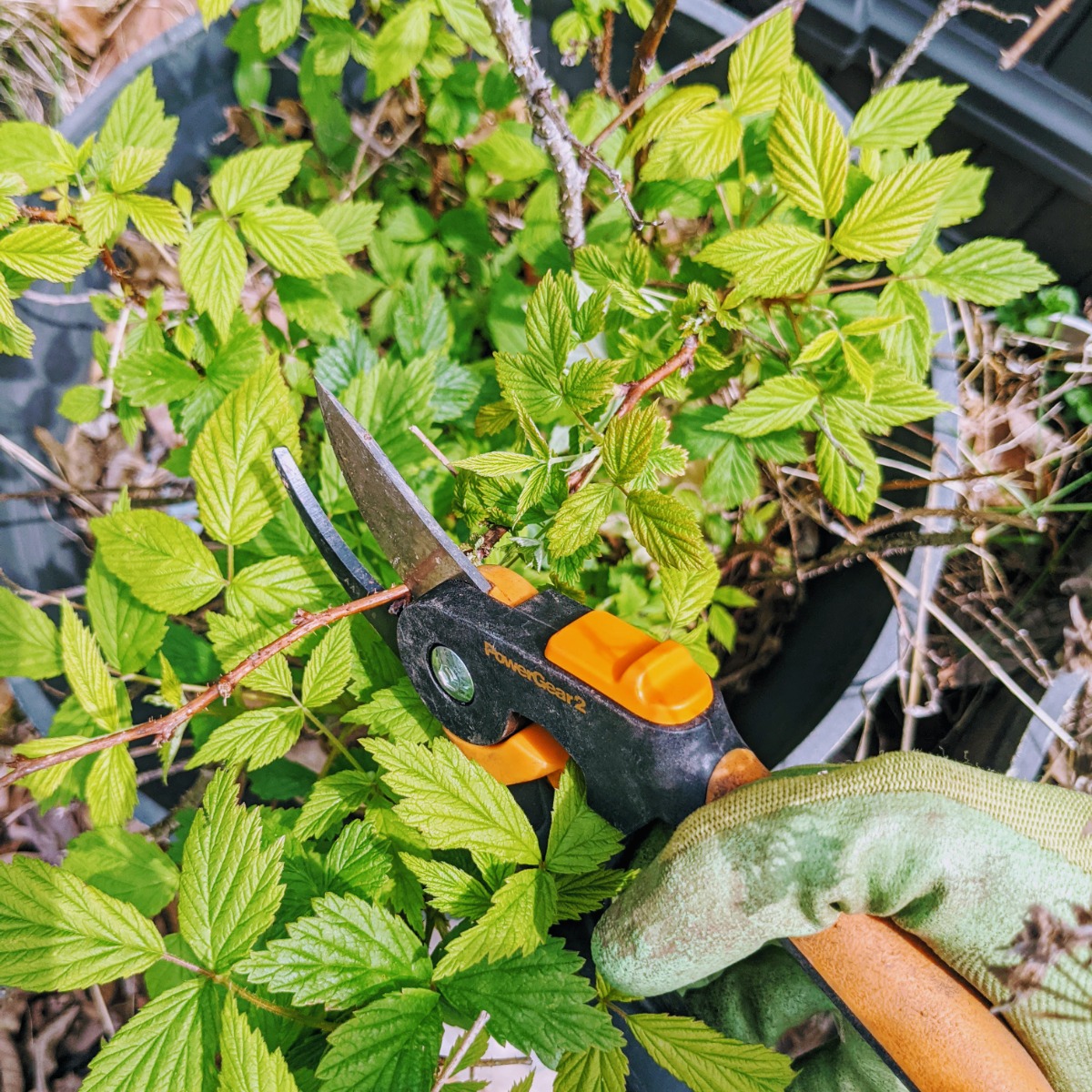
As it turns out, the best plan for pruning raspberry canes may come down to what type of raspberries you have!
How do I know which type of raspberries I’m growing?
When your raspberries bear fruit gives you a clue to the type of raspberries you’re growing. Summer-bearing raspberries, also known as June-bearing or floricane fruiting, yield berries on second-year growth (woody canes, aka: floricanes). Everbearing raspberries (primocane fruiting berries) like Heritage red raspberry produce fruit on primocanes (green canes) in the fall of the first year and again on floricanes in the early summer of the second year, and so on.
June-bearing raspberries fruit once per season, usually in the mid-summer. Everbearing raspberry bushes actually fruit twice a season, in the early summer and again in fall.
This is why it’s important to know what kind of raspberries you’ve got. You don’t want to prune away the fruiting canes!
- Pay attention to the plant tag when you buy raspberry bushes. You can simply Google your raspberry’s name to determine what kind it is.
- Notice when your berries fruit and if it’s once or twice. This can also help you figure out which berries you have.
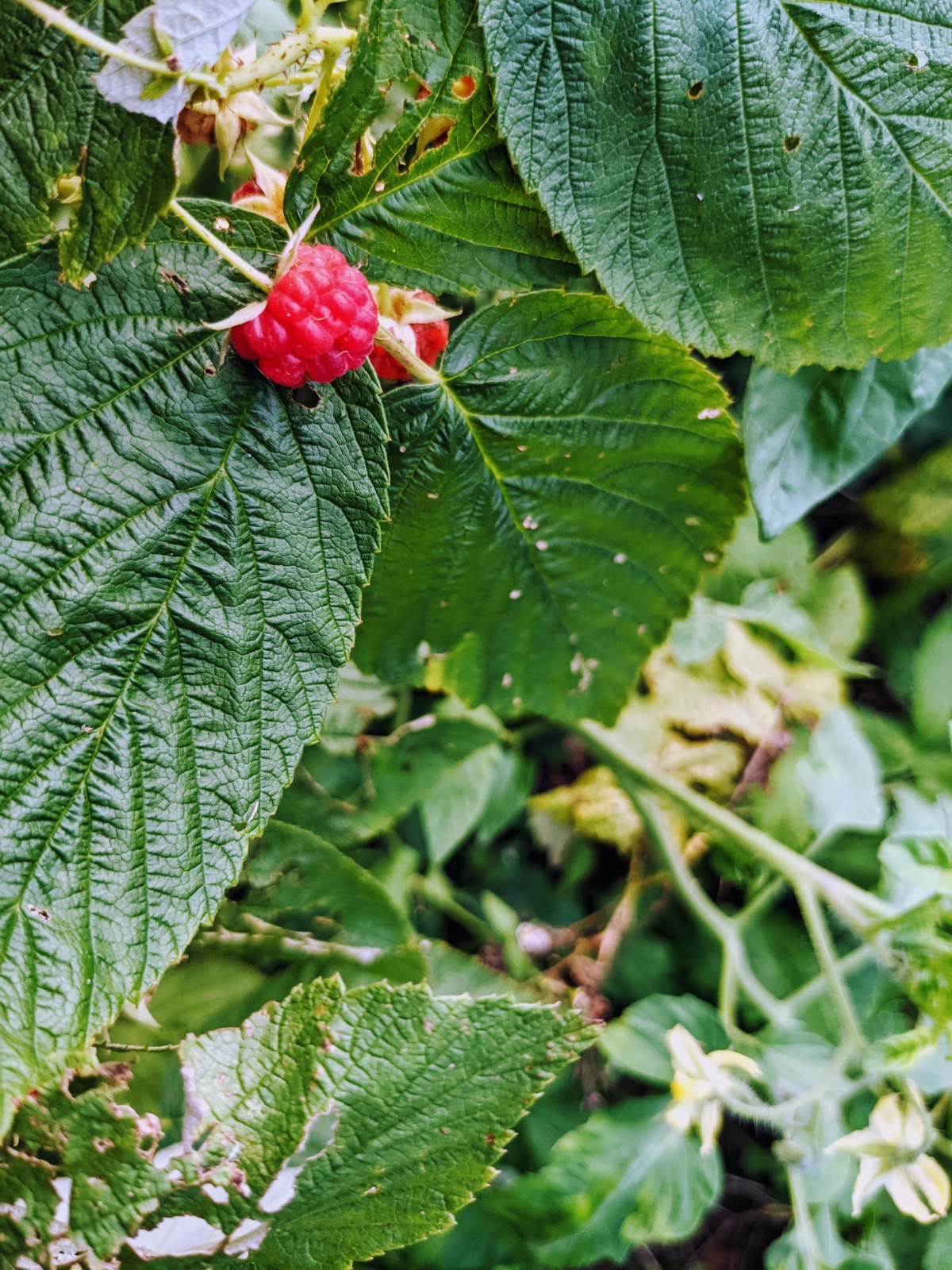
When is the best time to prune raspberries?
The best time to prune raspberry bushes depends on which type you’re growing. The best time for pruning summer-bearing raspberries is in the fall immediately after fruiting concludes. For everbearing raspberries, the best time depends on your intentions for the crop. To enjoy a robust focus on a single fall harvest, plan to prune in late winter (such as February) or early spring and cut everything down.
For two separate crops from everbearing raspberries, only remove canes after the summer crop. At this time, you are pruning raspberry canes that already fruited during the previous year’s growing season. They will not bear fruit again.
Some gardeners suggest leaving the spent raspberry floricanes attached to the plant through the winter. They believe those canes feed the raspberry crown and roots below.
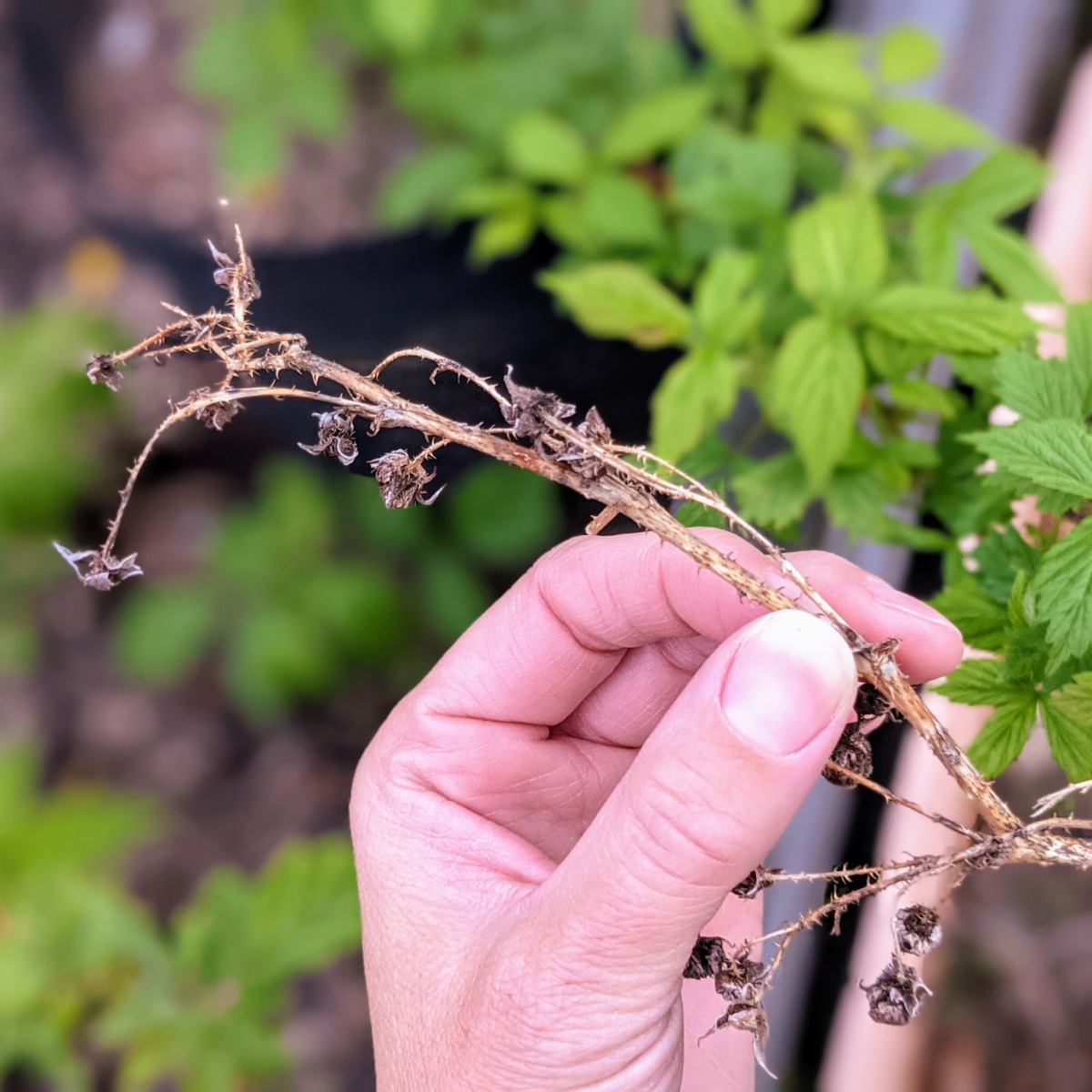
What are primocanes and floricanes?
Primocanes are first-year raspberry canes that emerge from the raspberry roots or crown and mature within the same season. Floricanes are second-year raspberry canes that have grown for a full year, in some cases, before fruiting and flowering for the first time.
What if I end up pruning raspberry bushes the wrong way?
Even if you end up pruning raspberry plants in a manner other than recommended, your berry plants will most likely recover just fine. Raspberry bushes tend to be resilient, so don’t worry. They will come back and fruit again next season.
Pruning Raspberry Bushes: DIY Guide
“Pruning is necessary to ensure healthy plants and more fruit,” explains Deb Ridgeway, County Coordinator of the Penn State Extension Master Gardeners of Huntingdon County.
“Think of four steps: 1) Remove the previous year’s canes in the late winter, very early spring.”
“2) Watch for the canes that pop up outside of the row(s) you want. Narrow your rows and dig those up and plant them where you’d like them. Keeping the rows narrow is key to a good patch.”
“3) Cut out weaker plants to keep the whole patch healthier and to discourage disease; and 4) Support the canes with stakes or a trellis made by stringing wire horizontally between stakes.”
“And I suppose I’d add a 5th step – be sure to enjoy your plump, healthy berries!” she says.
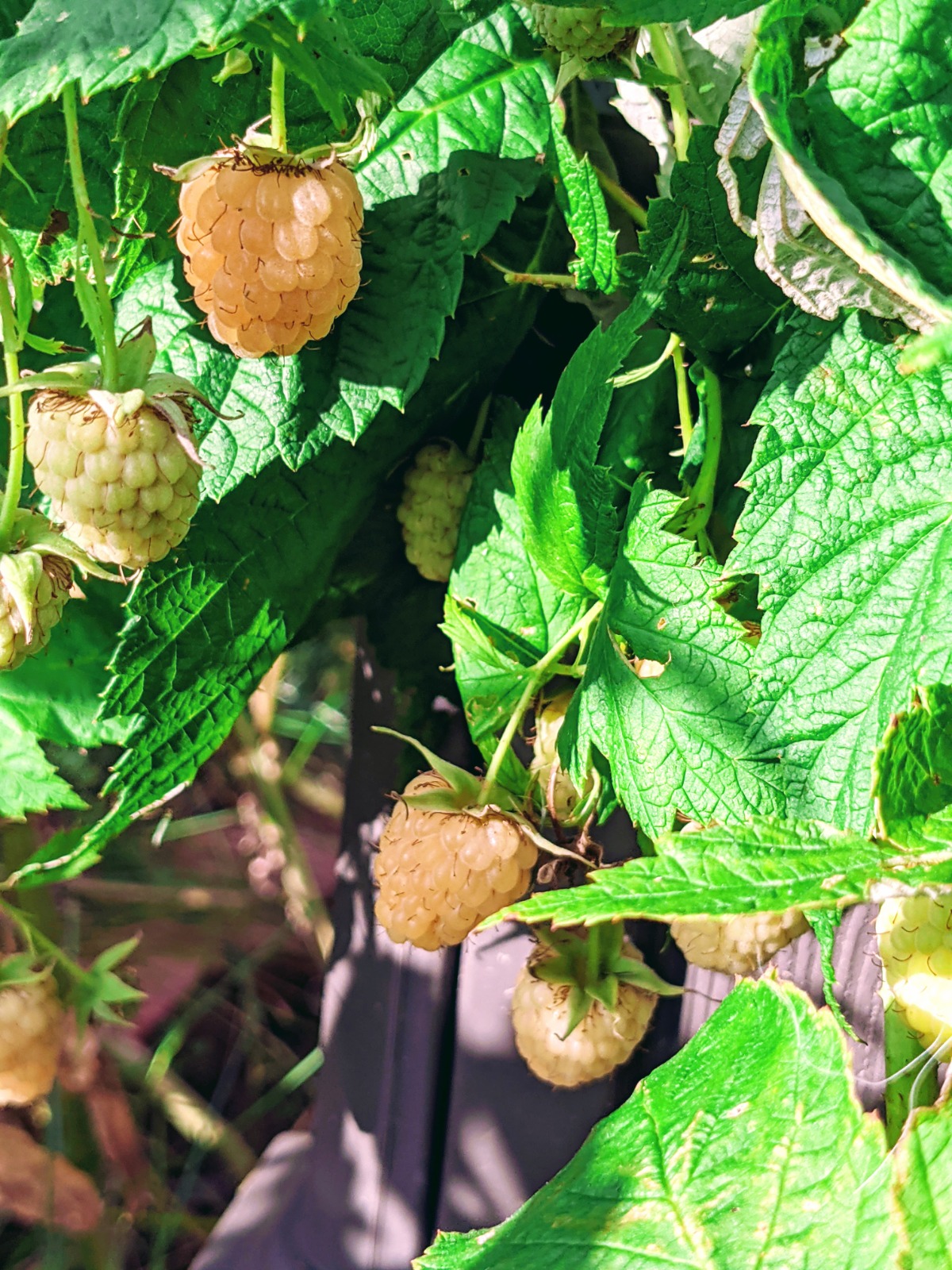
Deb makes it sound so easy! I know I’ve definitely made figuring out how to trim raspberry bushes more difficult than it actually is.
So, let’s break it down!
- Determine what type of raspberry plant you’re growing. Think of it in one of two ways, whatever is easier for you to remember:
- Primocane Fruiting vs. Floricane Fruiting (1st year vs. 2nd year)
- Summer-Bearing Raspberries vs. Everbearing Raspberries
- Make your plan for trimming raspberry bushes by type. Plan on cutting back raspberries according to the specific instructions based on fruiting type.
- Mark your calendar for best time for pruning raspberry plants. Better yet, update a page of key dates in your gardening journal!
- Remove the spent canes when the time is right. Set about cutting back raspberry bushes according to the best timeline and technique based on cultivar.
Do you know if you’re growing summer-bearing or everbearing berries?
You should be sure before taking any shears to your berry brambles!
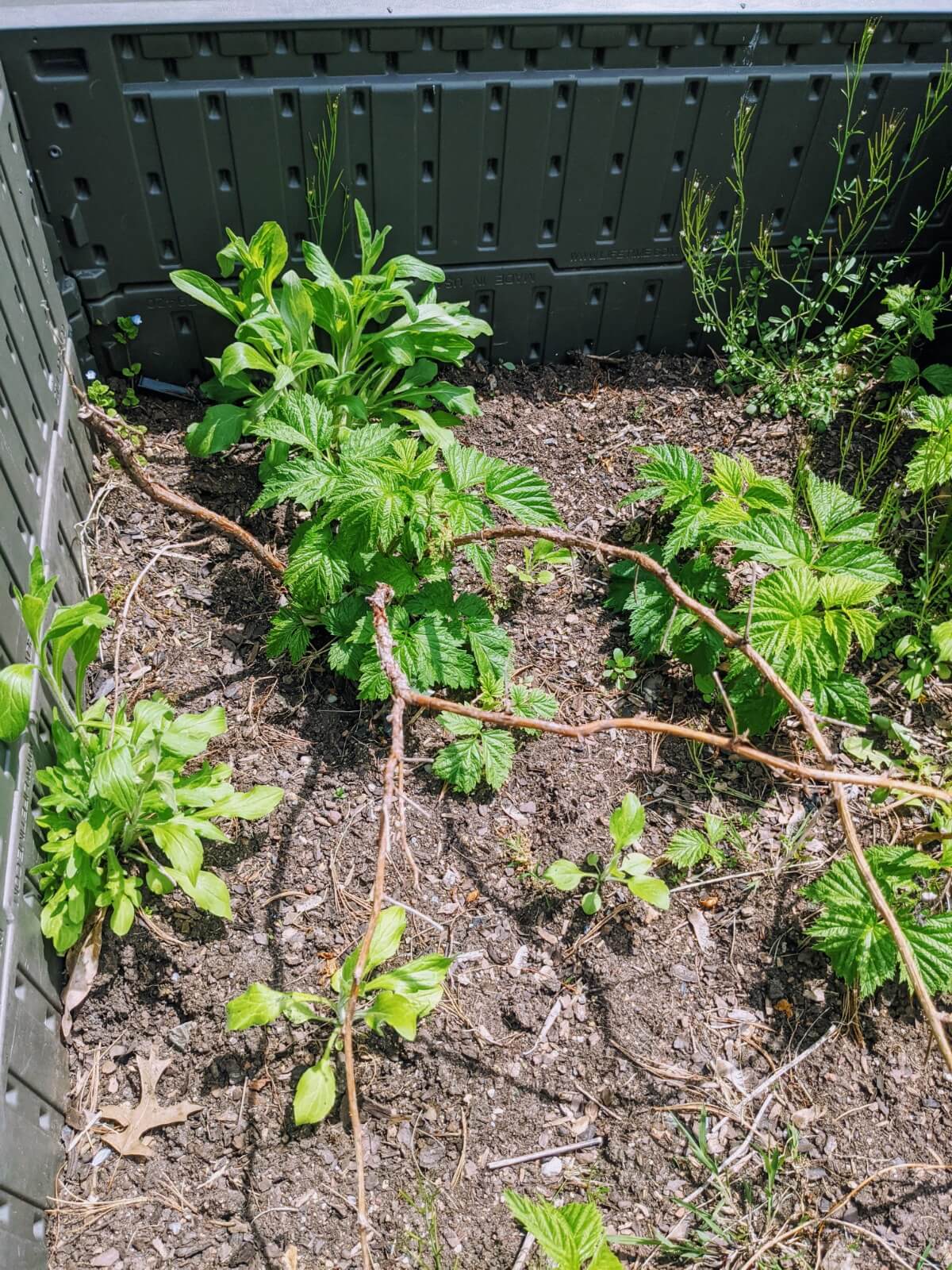
Everbearing / Fall-Bearing Raspberry Pruning
With fall-bearing berry bushes, decided if you are aiming for one or two harvests. The first harvest would be smaller and in the summer with a later harvest in the fall. Otherwise, you could enjoy a single late summer / early fall crop that could be more plentiful.
- For two raspberry harvests per season: Trim away only second-year raspberry canes in the summer after fruiting. They’ve completed their lifecycle and will produce no more berries.
- This results in two crops per season, where the early crop might be smaller and the latter a heavier crop.
- For one later harvest that could be bigger: First, cut back all canes in the fall after fruiting. Next, in the spring before the growing season begins, cut back first-year canes, leaving 3 or 4 of the new ones per square foot in a row. Remove any other canes through July.
- Pruning primocane raspberries in early spring assures a single yield of a late summer or early fall crop.
- This method can help thwart Japanese beetles due to the timing. (Source)
Summer-Bearing Raspberry Pruning
For summer-bearing (June-bearing) raspberry plants, focus on cutting just the floricane raspberry canes that already fruited.
- For spent floricanes: Cut back the woody raspberry canes in the fall, immediately after fruiting. Trim them down to the ground.
- Cut back floricanes only when you’re sure they’re done producing.
You can also “top” raspberries or shape the plants some, but I’ll leave those lessons for another day. I’m still working on wrapping my head around all the ins and outs of pruning primocane and floricane raspberries.
Removing Raspberry Suckers
Raspberries love to multiply! You can add more plants to your backyard fruit orchard simply by digging up and replanting the suckers.
Check out my easy guide on propagating raspberry bushes from suckers.
Suckers can show up several feet away from the mother plant, so be on the lookout!
Pruning Raspberries in PA
Personally, I am growing Anne yellow raspberries and Heritage red raspberries over here. I’ve discovered that Anne raspberries are everbearing, generally fruiting in July and September.
Heritage red raspberries are also everbearing raspberries and we get a lovely double-crop every year.
Luckily, since I’m growing two everbearing varieties, it seems I only have to get really good at pruning raspberry canes one way. (For now!)
So, I’ll focus on Heritage raspberry pruning and copy my efforts over to my golden Anne raspberries.
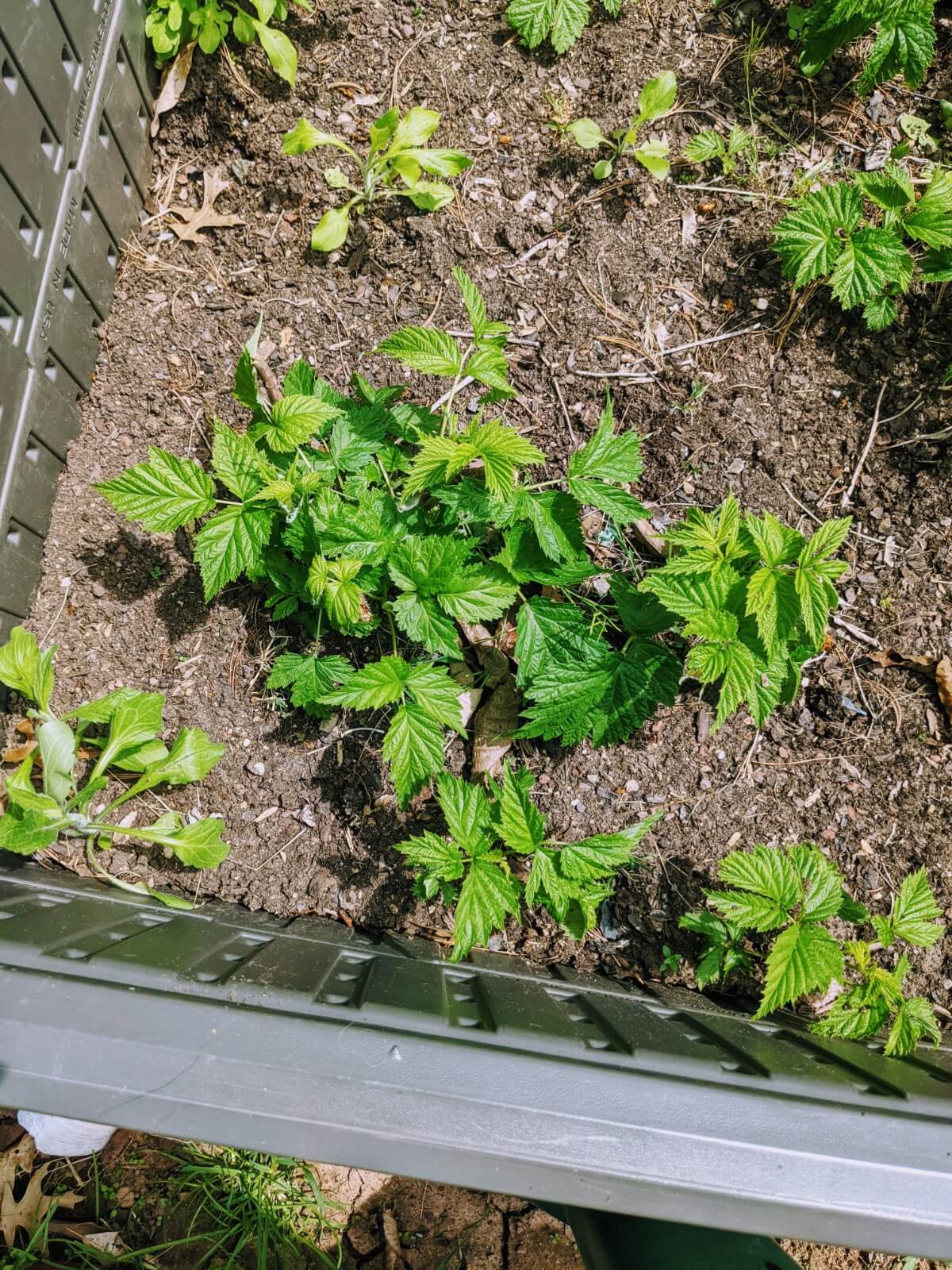
How to Prune Everbearing Raspberries
In thinking about it, I believe I would like to start out pruning canes that are done fruiting and aim for two raspberry crops per year. At least for now.
So here it is – my plan for trimming raspberries each year:
- Tidy up the raspberry plants now. Since I didn’t do any pruning last fall or all winter and spring so far, I figure it’s better late than never. I’ll just remove obvious spent growth to start.
- Cut back woody raspberry canes after fruiting. Going forward, in the early to mid-summer, I will cut back raspberry canes that already fruited across two seasons. That means new growth results in a fall crop, and a future summer crop before cutting those back.
So, my plan is spring tidy-up and summer pruning after fruiting. I think I’ve finally got it down!
In case I get overwhelmed again, I can always come back here and remind myself what to do!
Does anyone else find pruning raspberries as maddening as I do?!
The Most Important Things to Know about Cutting Back Raspberries
If you’re still feeling overwhelmed (like I often have), here are some key details about pruning raspberries:
- Remember, it’s about the fruiting season. It isn’t as simple as “pruning red raspberries” or yellow ones or black ones for that matter. You must identify when your berries fruit so you only remove nonfruiting canes!
- For June-bearing raspberries, cut back raspberry canes that already fruited the previous year.
- For everbearing raspberries, plan to remove only the third-year canes. (They will produce fruit on both first-year and second-year canes.)
- Keep both kinds of raspberries separate. If you choose to grow both summer-bearing and fall-bearing raspberries, it’s vital to plant them in separate areas. If not, as the berries spread, it can become difficult to tell them apart for pruning purposes.
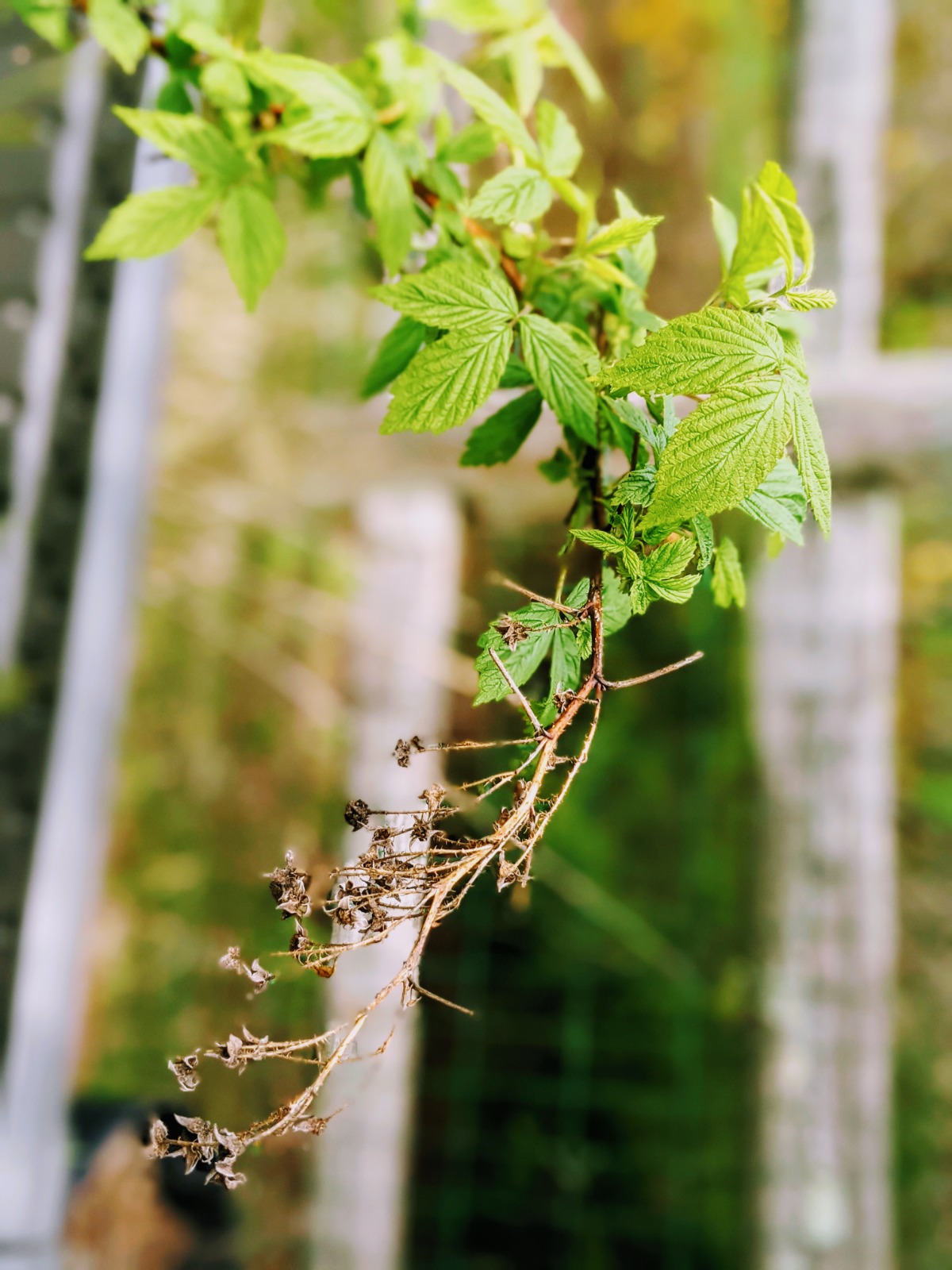
Resources:
To further improve your raspberry pruning prowess, check out these rad raspberry resources:
Raspberry Cultivars
For our region in zone 6b, I found this excellent resource on Recommended Raspberry Varieties for Pennsylvania from Penn State Extension. Chances are you can find your raspberry cultivars on here and better understand what type of pruning they need.
If you hail from the other coast, you may be better suited for Raspberry Cultivars for the Pacific Northwest by the Pacific Northwest Extension. (pdf)
If you live somewhere else, simply search for a list of raspberry cultivars and add a keyword for your state or region. You can also add “extension” to narrow search results to master gardeners and the like.
Raspberry Info & Care:
If you’re still having trouble wrapping your mind around primocanes and floricanes or summer-fruiting and ever-bearing raspberries, we’ve got you covered. Check out this guide on Summer-bearing vs. Fall-bearing Raspberries from Penn State Extension.
And while you’re just getting started with growing raspberries, this guide from Penn State Extension, Raspberry Planting and Care for Home Gardeners, and this post by Piedmont Master Gardeners may help with caring for your crops.
Finally, this resource by the Colorado State University Extension includes a graphic further down on the page that I found very insightful. It truly illustrates the difference between “fall bearing” raspberries and “summer bearing” raspberries. (Scroll until you get to the section on “Pruning.”)

Pruning Raspberries: Final Thoughts
“Proper care of raspberries, regardless of variety, requires pruning, weeding, mulching and providing support,” says Deb Ridgeway of the Penn State Extension.
“For the most part, cutting down spent canes (identified by their tan color and rough ‘bark’) is done best in late winter, very early spring,” she says. “New canes may be trimmed to encourage lateral growth and more fruit. This can be done in the early spring.”
“Watch for the runners and remove them if they are outside the planting area. The rows should be kept clear of weeds, should provide support, and should be fertilized.”
For best results, Deb recommends researching the specific variety of raspberry you’re growing. Check in with the grower for type-specific tips!
As mentally exhausting as it’s been to figure out raspberry maintenance and care, I’m glad I have. It is truly worth it for all the delicious yellow and red raspberries we get to enjoy!
Do you have any helpful tips to add or specific questions about pruning raspberry bushes? Feel free to hit us up in the comments with your stories, questions, and tips – we love hearing from you!
Happy Gardening!

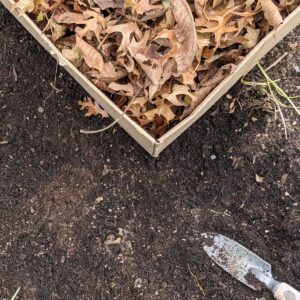

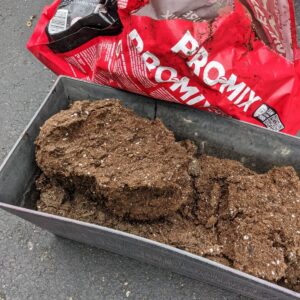
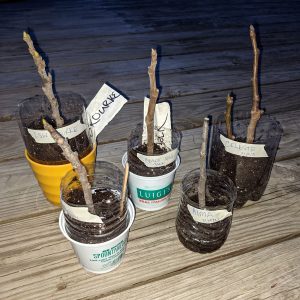


I planted sunflowers in a very large pot one year. Somehow some bird decided he didn’t like my sunflowers and dumped some raspberry seed in the pot. Now I have raspberries that I cannot get rid of. They are spreading like wild fire in my stone enclosure. How do I get rid of them?
Hi Rebecca,
Sorry to hear about the raspberry debacle – wish I was local, I’d come dig them out and take them away for you. 🙂 Maybe that is a good solution if you know any gardeners locally who would want them! Free to good home – you move it! Is the stone enclosure able to accommodate a traditional shovel or are they growing in cracks, etc.? I do think the best solution is to have someone dig them out. Good luck!